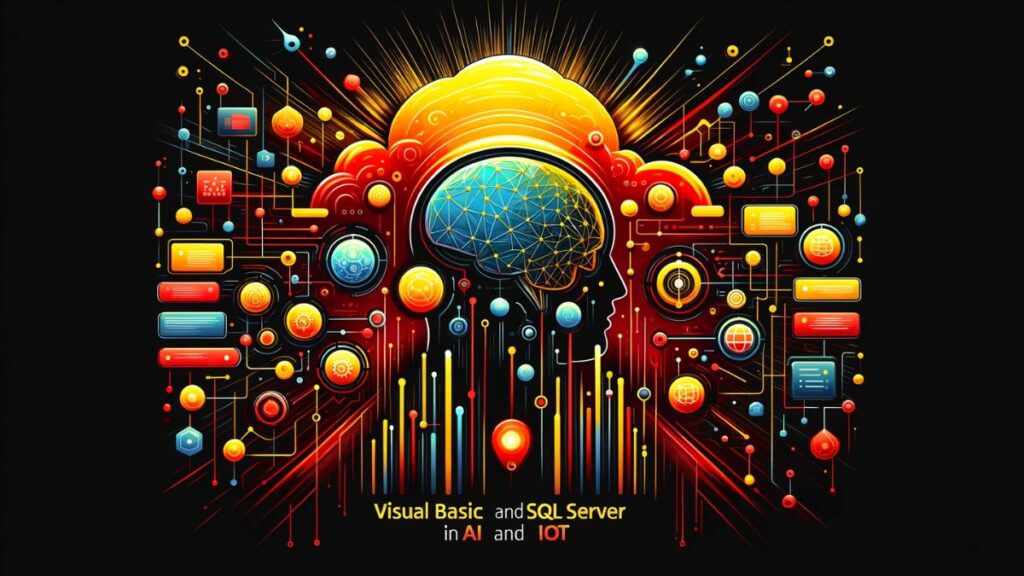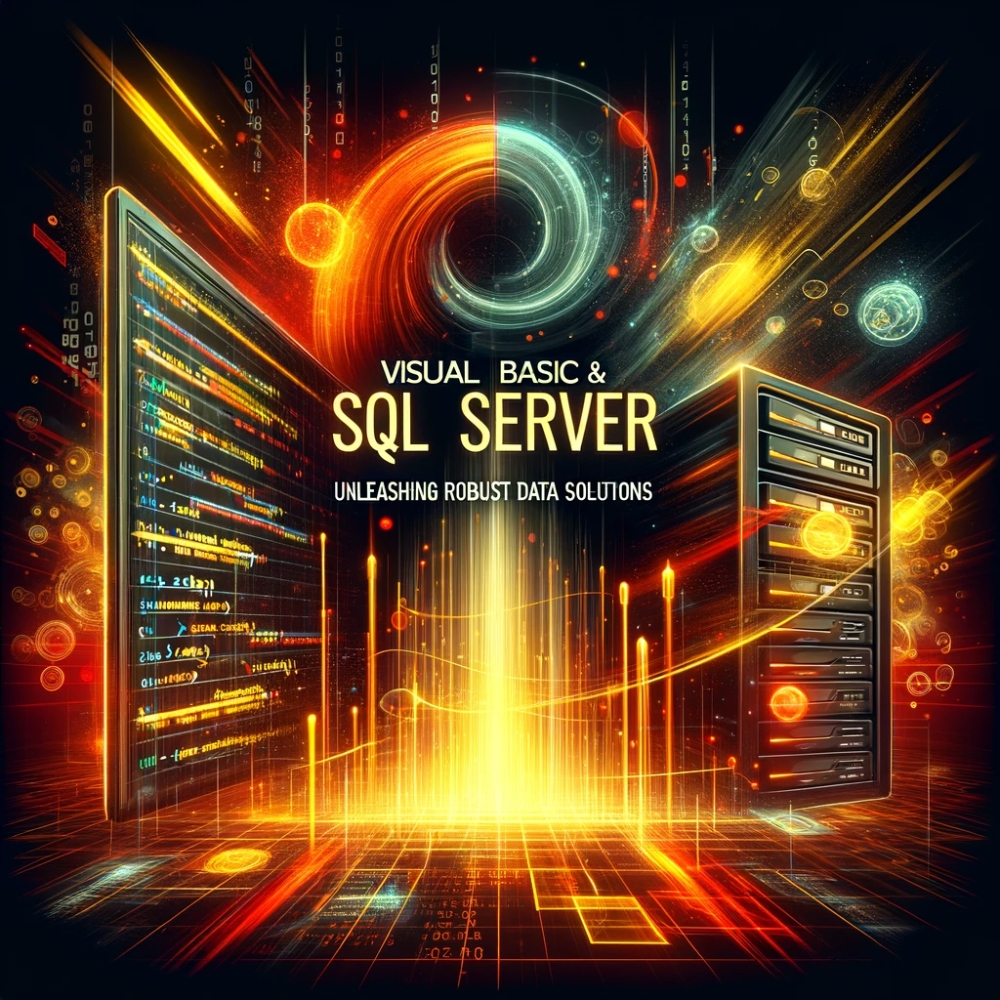Visual Basic and SQL Server are two powerful tools in the world of software development and database management. Visual Basic, a programming language developed by Microsoft, is known for its ease of use and ability to create a wide range of applications, from simple desktop programs to complex enterprise solutions. It is part of the larger Microsoft Visual Studio suite which offers a comprehensive development environment.
SQL Server, also a Microsoft product, is a relational database management system (RDBMS) that supports a wide variety of transaction processing, business intelligence, and analytics applications in corporate IT environments. It is widely praised for its robust data management capabilities, security features, and scalability.
The Significance of Their Integration
The integration of Visual Basic and SQL Server brings together the simplicity and versatility of Visual Basic with the robust data management capabilities of SQL Server. This combination allows developers to:
- Create efficient applications: Leverage Visual Basic’s user-friendly interface to build applications that can effectively communicate with SQL Server databases.
- Manage data effectively: Utilize SQL Server’s powerful data handling and storage capabilities to manage large volumes of data.
- Enhance application security: Benefit from SQL Server’s advanced security features to protect data integrity and privacy.
- Improve performance: Use SQL Server’s performance optimization features to enhance the speed and responsiveness of applications developed in Visual Basic.
Real-World Applications
In practical terms, this integration is utilized in a variety of applications, including but not limited to:
- Enterprise Resource Planning (ERP) Systems: For managing business processes and data.
- Customer Relationship Management (CRM) Applications: To handle customer data and interactions.
- Data Analysis Tools: For processing and visualizing large datasets.
Evolution Over Time
Over the years, both Visual Basic and SQL Server have evolved significantly. Visual Basic has transitioned from the earlier BASIC language, offering a more structured programming environment, while SQL Server has constantly been updated with new features to handle big data, cloud computing, and advanced analytics.
This evolution is evident in the continuous updates and releases from Microsoft, ensuring that both Visual Basic and SQL Server remain at the forefront of technological advancement in their respective fields.
Recent Developments in SQL Server Integration Services (SSIS)
General Availability of SSIS Projects for Visual Studio 2022
In a significant move, Microsoft announced the general availability of SQL Server Integration Services (SSIS) Projects for Visual Studio 2022. This extension enhances the integration capabilities between Visual Basic and SQL Server, allowing developers to design and manage SSIS packages within the latest Visual Studio environment. These packages are crucial for data extraction, transformation, and loading (ETL) operations, a key aspect of data management in SQL Server.
Enhancements in SQL Server 2022 Integration Services

With the introduction of SQL Server 2022 Integration Services, several new features and improvements have been implemented. These include:
- Support for SQL Server 2022 as a Target Server: This allows for seamless data operations and integration with the latest version of SQL Server.
- ODBC Improvements: Enhancements in ODBC (Open Database Connectivity) bindings for better data handling and efficiency.
Visual Basic Code Example for SSIS Integration
To demonstrate the integration of Visual Basic with SSIS in SQL Server, consider the following simple example. This code snippet illustrates how to execute an SSIS package from a Visual Basic application:
Imports System
Imports Microsoft.SqlServer.Dts.Runtime
Module Module1
Sub Main()
Dim pkgLocation As String
Dim pkg As New Package
Dim app As New Application
Dim pkgResults As DTSExecResult
pkgLocation = "C:\YourSSISPackage.dtsx"
pkg = app.LoadPackage(pkgLocation, Nothing)
pkgResults = pkg.Execute()
If pkgResults = DTSExecResult.Success Then
Console.WriteLine("Package executed successfully.")
Else
Console.WriteLine("Package failed to execute.")
End If
End Sub
End Module
In this code, an SSIS package located at “C:\YourSSISPackage.dtsx” is executed using the Dts.Runtime namespace from Visual Basic. This is a basic example of how Visual Basic can interact with SSIS packages, triggering data workflows directly from the application.
Significance for Developers
These advancements are pivotal for developers who rely on Visual Basic for application development and SQL Server for data management. The enhancements in SSIS and the integration with Visual Studio 2022 streamline the ETL processes, making it more efficient to handle complex data workflows. Moreover, it enables developers to utilize the latest features of SQL Server 2022, ensuring that their applications are up-to-date and highly functional.
Performance Enhancements in SQL Server 2022
Intelligent Query Processing
SQL Server 2022 introduces a new feature set known as Intelligent Query Processing (IQP). This feature enables SQL Server to build better execution plans, adapting dynamically to the runtime environment. For Visual Basic applications, this means more efficient database queries and improved overall performance.
Query Store Improvements
Another significant enhancement is the improved Query Store. It’s now enabled by default for all new databases, facilitating easier monitoring and tuning of query performance. Additionally, the Query Store can resolve issues related to the MAXDOP (maximum degree of parallelism) setting, memory grants, and the cardinality estimator. This is particularly beneficial for Visual Basic applications that heavily rely on SQL Server for data operations.
Visual Basic Code Example for Utilizing IQP Features
While the direct impact of IQP and Query Store improvements might not be seen in the Visual Basic code itself, the efficiency of SQL queries made from Visual Basic applications will be enhanced. Here’s an example of a Visual Basic code snippet that executes a SQL query:
Imports System.Data.SqlClient
Module Module1
Sub Main()
Dim connectionString As String = "YourConnectionString"
Dim query As String = "SELECT * FROM YourTable WHERE Condition = 1"
Using connection As New SqlConnection(connectionString)
Dim command As New SqlCommand(query, connection)
connection.Open()
Dim reader As SqlDataReader = command.ExecuteReader()
While reader.Read()
Console.WriteLine(reader(0).ToString())
End While
End Using
End Sub
End Module
In this code, a SQL query is executed from a Visual Basic application to retrieve data from a SQL Server database. With SQL Server 2022’s enhanced features, such queries will benefit from improved performance and efficiency.
High Availability and Connection Improvements
High availability in SQL Server 2022 has been enhanced with features like distributed Availability Groups (AGs) between on-prem SQL Server and Azure SQL Managed Instance. This allows for quick creation of disaster recovery solutions and read-only replicas for reporting. For Visual Basic applications that require high data availability, this means less downtime and more reliable data access.
Security and Governance Improvements
SQL Server 2022 also brings advancements in security and governance. The introduction of SQL Server Ledger creates an immutable record of data modifications, using blockchain-like technologies. This is particularly beneficial for applications that require high data integrity and traceability. Visual Basic applications interacting with SQL Server can leverage these features for enhanced security and compliance.
Challenges and Solutions in Integrating Visual Basic with SQL Server

Integration between Visual Basic and SQL Server can sometimes present challenges, particularly in areas of data synchronization, error handling, and optimizing performance. However, with the right approach and tools, these challenges can be effectively managed.
Challenge: Data Synchronization
Problem: Ensuring that the data in the application (Visual Basic) is consistently synchronized with the SQL Server database.
Solution: Implementing efficient data-binding strategies in Visual Basic. Using events and triggers in SQL Server can help keep data in sync.
Visual Basic Code for Data Binding:
Here’s an example of how you can use data binding in Visual Basic to synchronize data with a SQL Server database:
Imports System.Data.SqlClient
Module Module1
Sub Main()
Dim connectionString As String = "YourConnectionString"
Dim sql As String = "SELECT * FROM YourTable"
Dim connection As New SqlConnection(connectionString)
Dim dataAdapter As New SqlDataAdapter(sql, connection)
Dim dataSet As New DataSet()
dataAdapter.Fill(dataSet, "YourTable")
' Binding the data to a control (e.g., DataGridView)
Dim bindingSource As New BindingSource()
bindingSource.DataSource = dataSet
bindingSource.DataMember = "YourTable"
' YourDataGridView is a hypothetical DataGridView control
YourDataGridView.DataSource = bindingSource
End Sub
End Module
In this example, a DataSet is filled with data from a SQL Server table using a DataAdapter. This data is then bound to a Windows Forms control (like DataGridView) through a BindingSource.
Challenge: Error Handling
Problem: Managing database errors and exceptions in Visual Basic applications.
Solution: Implement robust error handling in your Visual Basic code to catch and respond to SQL exceptions.
Visual Basic Code for Error Handling:
Try
' Your SQL operation code here
Catch ex As SqlException
Console.WriteLine("SQL Error: " & ex.Message)
Catch ex As Exception
Console.WriteLine("General Error: " & ex.Message)
Finally
' Code to finalize operations, like closing connections
End Try
This snippet shows a basic structure for handling SQL-specific errors (SqlException) and other general exceptions. It ensures that all exceptions are caught and appropriately handled.
Challenge: Performance Optimization
Problem: Ensuring that Visual Basic applications interact with SQL Server databases efficiently.
Solution: Optimize SQL queries, use stored procedures, and implement caching mechanisms.
Visual Basic Code for Using Stored Procedures:
Dim connectionString As String = "YourConnectionString"
Dim storedProcedure As String = "YourStoredProcedure"
Using connection As New SqlConnection(connectionString)
Dim command As New SqlCommand(storedProcedure, connection)
command.CommandType = CommandType.StoredProcedure
' Add any required parameters to the command here
connection.Open()
command.ExecuteNonQuery()
End Using
This code demonstrates how to call a stored procedure from a Visual Basic application. Stored procedures are pre-compiled in SQL Server, which can lead to significant performance improvements.
Future Outlook and Innovations in Visual Basic and SQL Server Integration
Anticipated Developments
As technology continues to advance, we can expect to see several key innovations in the integration of Visual Basic and SQL Server. These may include:
- Enhanced Cloud Integration: With the growing emphasis on cloud computing, further integration with cloud services like Azure SQL Database and Azure Managed Instance is likely. This would facilitate more seamless data movement and management across cloud and on-premises environments.
- Artificial Intelligence and Machine Learning Capabilities: Integrating AI and ML directly into SQL Server and making these features accessible through Visual Basic could revolutionize how data is processed and analyzed.
- Improved IoT Support: As the Internet of Things (IoT) continues to expand, enhanced support for IoT data streams in SQL Server, coupled with Visual Basic’s easy-to-use programming model, could open new avenues for real-time data processing and analytics.
Visual Basic and SQL Server in AI and IoT

While direct code examples involving advanced AI and IoT integrations are complex and beyond the scope of basic Visual Basic syntax, let’s conceptualize how Visual Basic could be used to interact with these advanced SQL Server features:
AI and Machine Learning:
Visual Basic could be used to call stored procedures or SQL scripts that trigger machine learning models hosted in SQL Server. For example, a Visual Basic application might send data to SQL Server for analysis and receive predictions or insights:
' Hypothetical code to interact with a SQL Server-hosted ML model
Dim connectionString As String = "YourConnectionString"
Dim sql As String = "EXEC RunMachineLearningModel @InputData"
Using connection As New SqlConnection(connectionString)
Dim command As New SqlCommand(sql, connection)
command.Parameters.AddWithValue("@InputData", yourData)
connection.Open()
Dim result As Object = command.ExecuteScalar()
Console.WriteLine("ML Model Output: " & result.ToString())
End Using
IoT Data Streams:
For IoT, Visual Basic applications could be designed to interact with SQL Server databases storing IoT data. The applications could process, visualize, or trigger actions based on this data:
' Hypothetical code to process IoT data from SQL Server
Dim connectionString As String = "YourConnectionString"
Dim sql As String = "SELECT * FROM IoTData WHERE DeviceID = @DeviceID"
Using connection As New SqlConnection(connectionString)
Dim command As New SqlCommand(sql, connection)
command.Parameters.AddWithValue("@DeviceID", yourDeviceID)
connection.Open()
Dim reader As SqlDataReader = command.ExecuteReader()
While reader.Read()
' Process each row of IoT data
Console.WriteLine("Data from Device: " & reader("DataColumn").ToString())
End While
End Using
Conclusion
The integration of Visual Basic and SQL Server represents a robust and dynamic combination in the world of software development and data management. Throughout this article, we have explored various facets of this integration, from the general availability of SQL Server Integration Services (SSIS) for Visual Studio 2022 to the anticipated future developments in AI, machine learning, and IoT support. The practical examples provided, particularly in Visual Basic, illustrate not only the current capabilities but also the potential for future innovations. This combination of a user-friendly programming environment with a powerful database management system opens up a myriad of possibilities for developers, enabling them to create more efficient, secure, and sophisticated applications.
Looking forward, the continued evolution of both Visual Basic and SQL Server promises to further enhance their synergy. As technology progresses, especially with the increasing relevance of cloud computing, AI, and IoT, the potential applications and efficiency gains are bound to expand. Developers leveraging these technologies will be well-equipped to tackle the challenges of modern data management and application development, pushing the boundaries of what can be achieved in the realm of software solutions. Therefore, staying updated with these advancements will be crucial for harnessing the full potential of Visual Basic and SQL Server in the ever-evolving landscape of technology.




